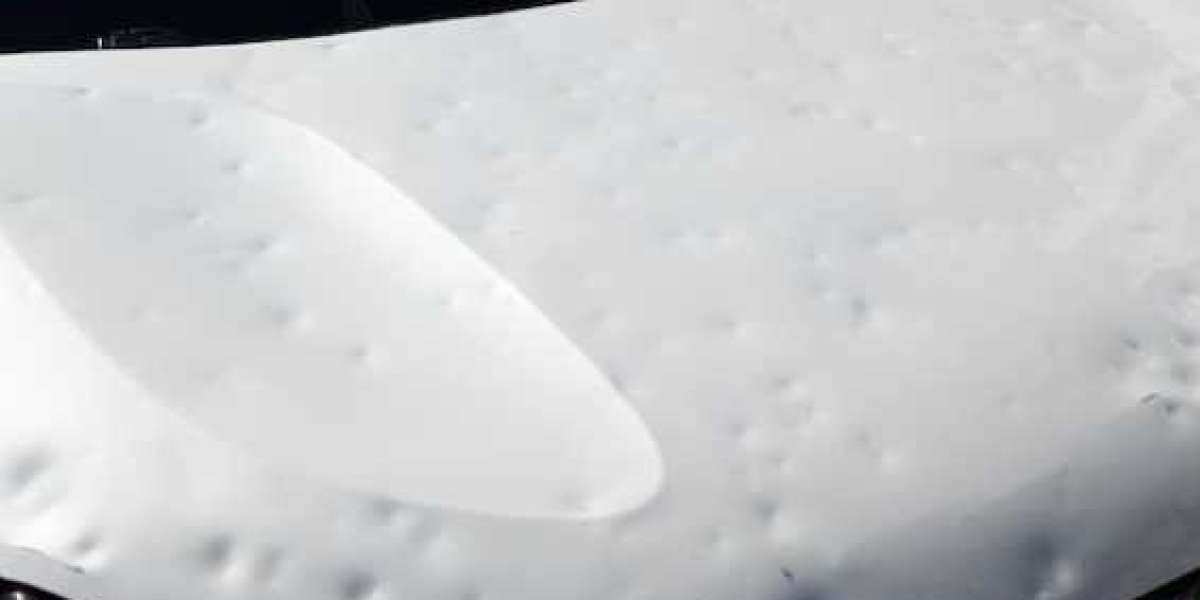Hailstorms are unpredictable and can cause significant damage to vehicles within minutes. One of the most common aftermaths is denting and surface damage to cars. Fortunately, auto hail damage repair solutions have evolved, offering effective ways to restore a car’s condition without a hefty price tag.
The Science Behind Hail Damage
Hail forms in strong thunderstorm systems where updrafts of wind carry raindrops into freezing zones in the atmosphere. When these frozen droplets become too heavy, they fall as hailstones. The size of hail can range from small pellets to golf-ball-sized chunks, which can cause serious damage to car surfaces.
Even minor hail can leave behind:
- Dents and dings
- Cracked paint
- Broken windshields
- Damaged side mirrors and trim
Types of Hail Damage and Their Impact
- Surface Dents
These are the most common and often the easiest to repair. Though they may seem superficial, they can compromise the vehicle’s aesthetics and value. - Paint Damage
When hail breaks through the paint layer, it exposes the metal beneath. This area becomes vulnerable to rust and corrosion. - Glass Damage
Cracked windshields or windows pose safety risks and need immediate replacement. - Structural Panel Distortion
In severe cases, hail can warp the structural shape of panels, affecting aerodynamics and alignment.
Repair Methods for Auto Hail Damage
Paintless Dent Repair (PDR)
This technique allows technicians to remove dents without disturbing the original paint. It’s ideal for soft dents with no paint damage.
Advantages:
- Affordable
- Non-invasive
- Fast repair time
- Keeps factory finish intact
Conventional Repair Techniques
For deep or sharp dents where paint is compromised, traditional methods like sanding, filling, and repainting are used.
Advantages:
- Suitable for severe damage
- Offers a brand-new look
- Long-lasting protection
Windshield and Glass Replacement
When glass is broken or cracked due to hail, replacing the windshield or windows becomes a necessary part of the repair process.
Steps in Auto Hail Damage Repair
- Inspection and Estimate
Technicians assess the damage and provide a cost and time estimate. - Insurance Involvement
Most comprehensive policies cover hail damage. Repair shops often assist with filing and managing claims. - Repairs Begin
Depending on damage severity, PDR or traditional repair methods are used. Glass replacement is performed if needed. - Finishing Touches
After repairs, technicians often conduct a thorough check and cleaning to ensure quality.
Tips to Prevent Hail Damage
- Use Covered Parking: Park in garages or under shelters when storms are forecasted.
- Purchase a Car Cover: Invest in a padded, weather-resistant cover for emergency protection.
- Weather Alerts: Stay updated on local weather and avoid travel during severe hail warnings.
Why Prompt Repair Matters
Waiting too long to address hail damage can lead to:
- Rust formation under chipped paint
- Decreased resale value
- Voided insurance claims due to delayed action
Immediate repair ensures your vehicle stays in top shape and protects it from long-term damage.
Conclusion
Hailstorms are beyond your control, but how you handle the aftermath is entirely up to you. Timely auto hail damage repair is crucial for maintaining the structural integrity, appearance, and value of your vehicle. Whether you choose paintless dent repair or traditional methods, always work with a reputable service provider. Don’t let dents define your vehicle — restore its beauty and performance with expert hail damage repair.



